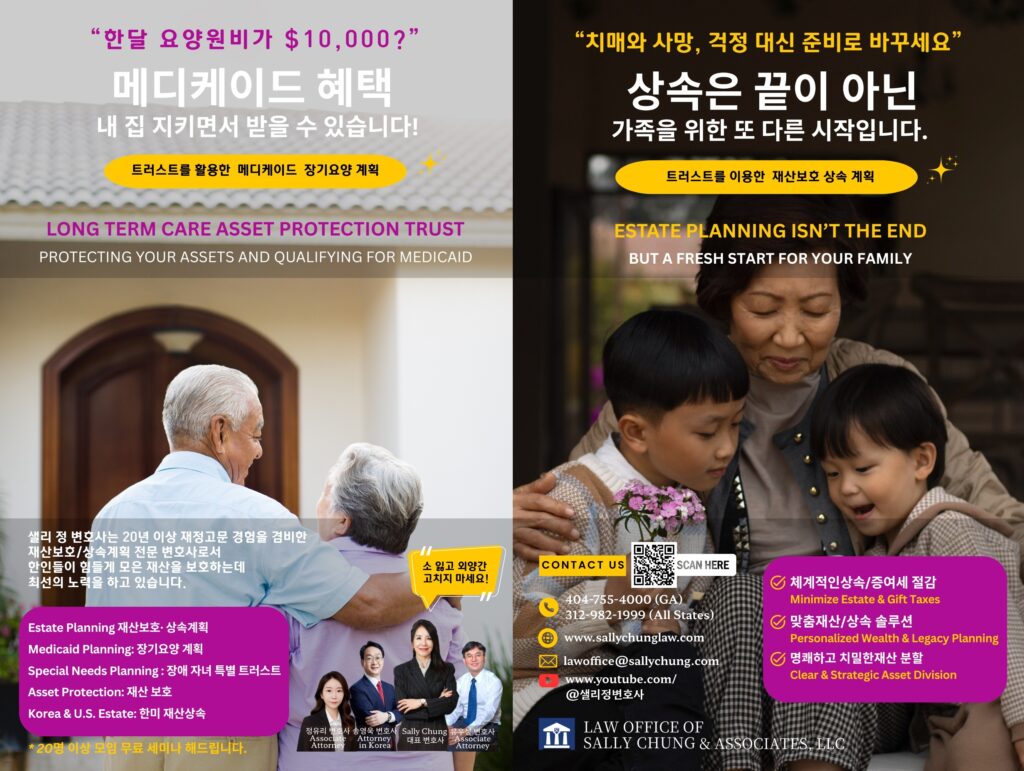
01 Jun Long-Term Care Medicaid Planning
According to statistics, 10,000 people in the U.S. turn 65 every day, and by the year 2040, there will be approximately 80 million people aged 65 or older. What’s even more noteworthy is that 75% of people over the age of 65 will require long-term care at some point.
The average cost of a nursing home ranges from $8,000 to $12,000 per month. Have you thought about who would pay for such an expense if you or your spouse were to enter a nursing home? Medicaid is a federal and state program that provides health insurance and long-term care assistance for low-income Americans. However, many older adults mistakenly believe that the same eligibility requirements apply to both general Medicaid and Long-Term Care Medicaid. They assume they can simply apply for Medicaid benefits once they enter a nursing home, but in reality, thorough pre-planning is essential to qualify for Long-Term Care Medicaid benefits.
The primary goal of Long-Term Care Medicaid planning is to ensure that if one spouse enters a nursing home, the other spouse is not left in poverty, and to protect the family’s assets for future generations while still qualifying for Medicaid to cover long-term care costs. Additionally, this planning helps shield assets such as the family home from the government’s Estate Recovery program, which seeks to recoup Medicaid costs after the recipient’s death.
Even while residing in a nursing facility, with proper Medicaid planning in place, you can still preserve assets for a disabled child or a financially dependent family member, and maintain a legacy for your children and grandchildren.
Many people mistakenly believe they must spend down all their assets to qualify for Medicaid and end up giving everything to their children, only to later regret it. Instead, by establishing a Long-Term Care Asset Protection Trust, you can protect your property and still become eligible for government benefits without prematurely transferring everything to your children.
Mr. Park created a Long-Term Care Asset Protection Trust and transferred his home and other assets into the trust. For legal and Medicaid purposes, those assets no longer belong to Mr. Park, yet he can continue to live in the home and enjoy tax benefits, all while qualifying for Medicaid.
After his death, the trust protects the assets from Medicaid Estate Recovery, allowing his children to inherit the property making this a truly win-win estate planning strategy. If Mr. Park had not created this trust, he might have had to spend tens or even hundreds of thousands more on nursing home care or give everything away to his children before applying for Medicaid.
Thankfully, by establishing the trust, he was able to preserve special rights to the assets, qualify for government benefits, and pass them to his children without triggering capital gains taxes.
Those with a modest amount of wealth are especially at risk failing to set up a proper protection plan could result in losing even their one and only home. So putting off planning under the belief that “I don’t have much, so I don’t need to do anything” is a serious mistake.
Establishing an asset protection trust not only prepares you for long-term care, but can also shield your assets from creditors, or from being affected by your children’s divorce or lawsuits even if you never go into a nursing home.
And as we always emphasize: this trust must be created at least five years before applying for Medicaid, so it’s crucial to prepare while you’re still healthy.


